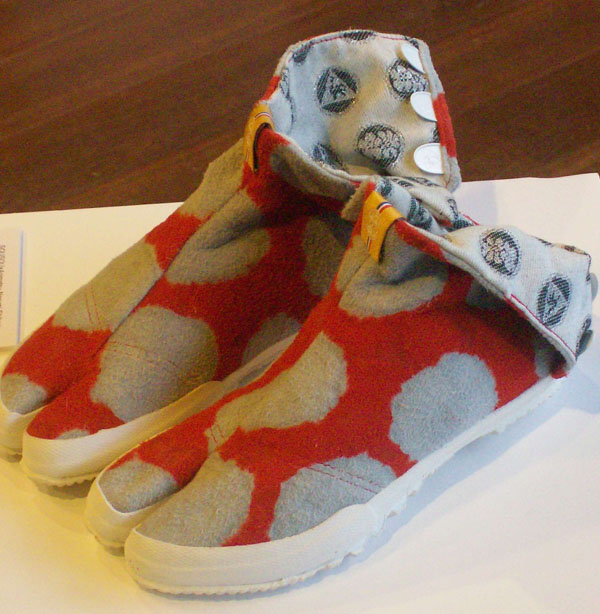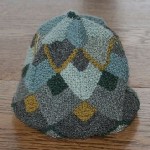International Shibori Symposium 2008 We arrived in Paris on November 8, 2008, the day of the International Shibori Symposium 2008 Public Program at the Musée du quai Branly. The exhibition, "Chemins de Couleurs (Color Trail: colors and patterns of the world)", presented over thirty different pieces from Africa, Asia, Oceania, and the Americas produced by reserve dyeing and shibori—methods whereby patterns are created by stitching and folding material before it is dyed. The stitches or folds, act to "resist" dyeing, whereas the exposed areas take the dye. The Musee used low lighting and glass cases to protect the works on display, and, as I walked through the exhibit, I felt that each piece, with its precise patterning, was more beautiful than the last. The North African works included such articles of female dress as veils, head bands, shoulder pieces and belts. Although each continent and culture developed their own methods of resist dyeing, the common goal was the creation of ceremonial clothing or clothing made for women. For example, one striking display that combined the ancient with the contemporary was that of Sou Sou X Arimatsu-Narumi Jikatabi. This was a bold collection of shibori-dyed footwear called Jikatabi. According to the Sou Sou booklet, "Jikatabi are traditional Japanese socks for the outer wear in which the big toe is separate from the remaining toes." There was also an amazing collection of traditional shibori and indigo-dyed kimonos from the Takeda family, 14th generation shibori merchants from Arimatsu.
Later, there were presentations by Hiroko Watanbe and Yasuko Iyanaga on the "Silk Road Journey Project 2007: From Nara to Rome" and Textile Education at Tama University of Arts, Tokyo. There were also performances by Mascha Mioni, an artist, and a runway show spotlighting international design.
The last event was a Kimono Show by the Traditional Costume Preservation Society of Japan that presented 100 cotton and silk shiboried kimonos, including the 12-layered Imperial coutier robes of the 11th century. The models illustrated traditional ways of putting on kimono and obi, folding and tying the obi around the waist and over the Kimono, transforming cloth into beautiful clothing.
By Michelle Ramirez

 Turkey Red Journal
Turkey Red Journal

| Volume 14 Issue 2 | A Journal Dedicated to Natural Dyes | Spring 2009 |

Knit hat dyed with fresh leaf indigo.
Photograph Copyright by Ruth Cadoret
In this Issue
Articles:
• A Scottish Colour Kitchen
• Contact Dyeing
• Earth's Palette: Natural
Colors for Fiber
• How Natural is Natural?
Notes from ISEND 2008
• Returning To Art
• Book Review:
Judith H. Hofenk de
Graaff, The Colourful
Past: Origins, Chemistry
and Identification of
Natural Dyestuffs
Nature's Gallery:
• Diana Maher and
Patricia MacIndoe
Jikatabi (Japanese shibori-dyed footwear)
Photograph Copyright by Michelle Ramirez